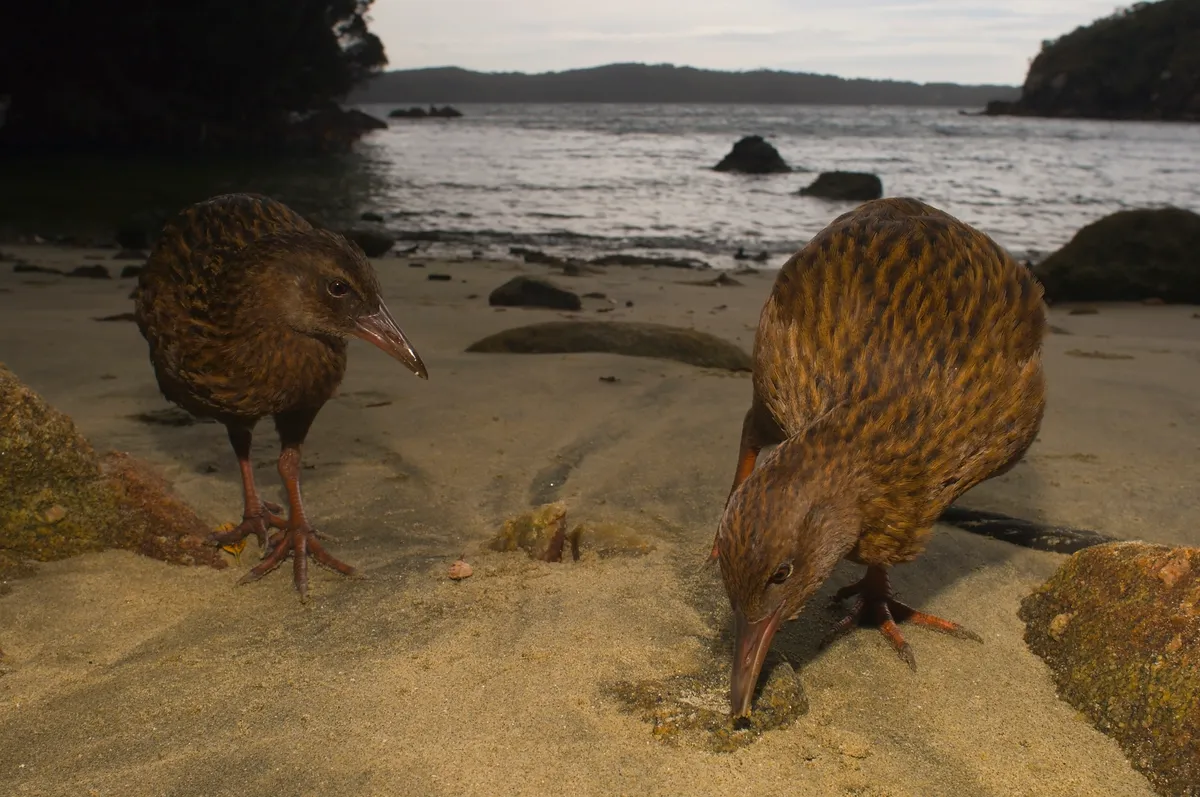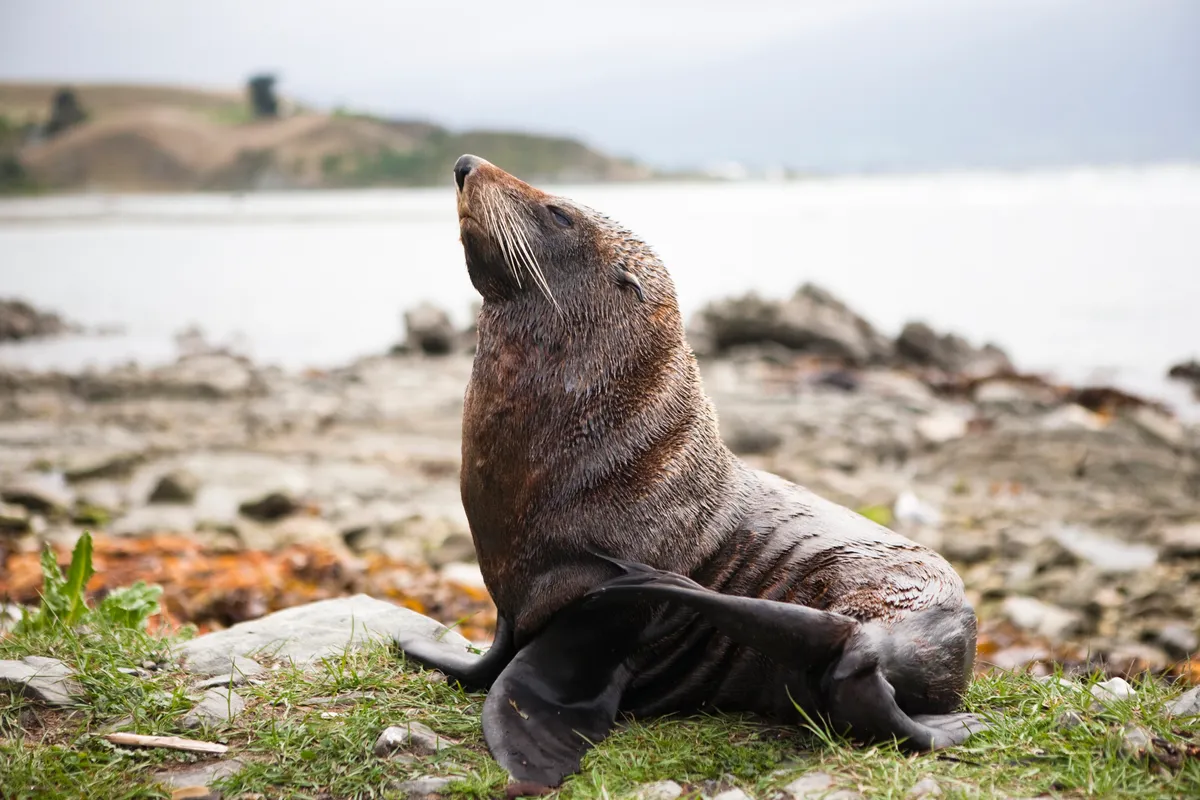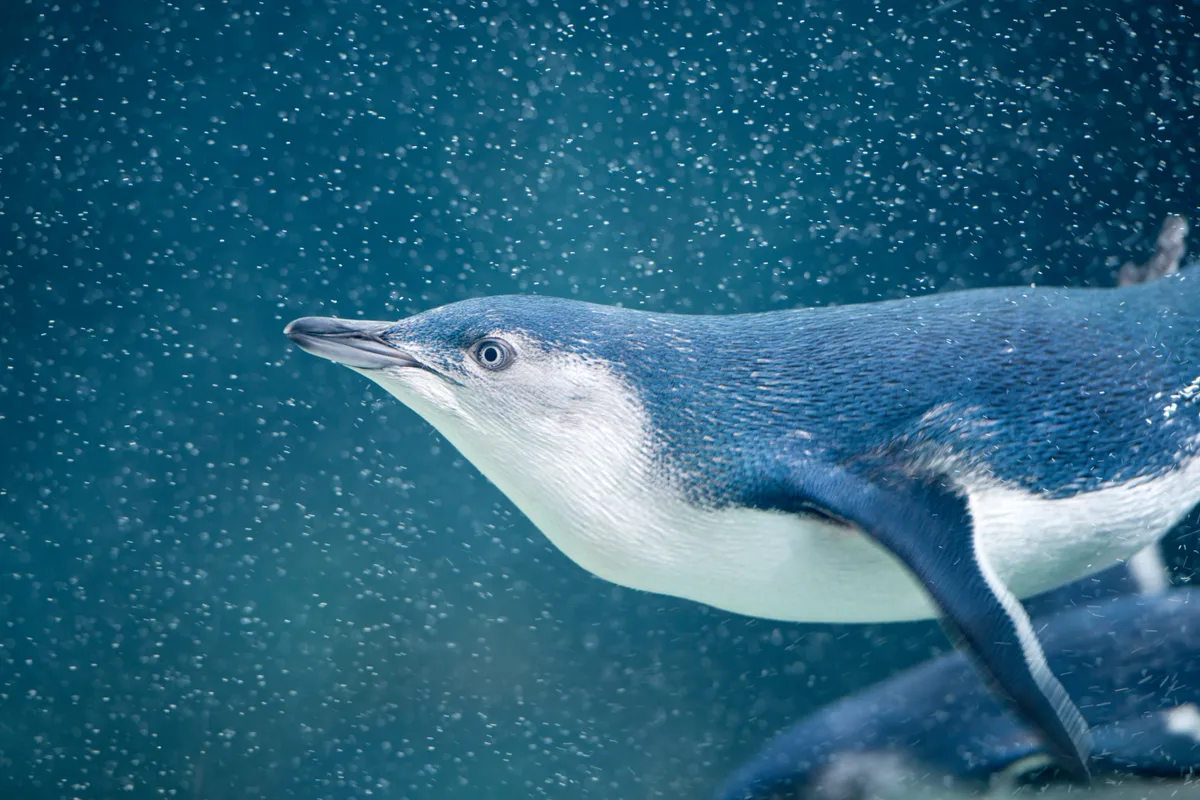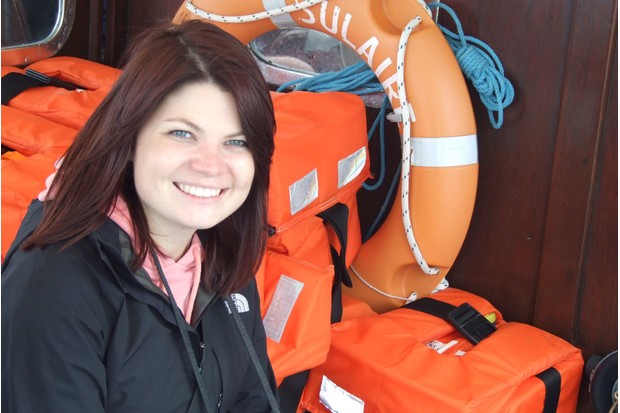With black beech forests ringing with birdsong and waters splashed by seals, dolphins and penguins, Abel Tasman National Park is also a delight for wildlife lovers. A major ecological restoration programme, called Project Janszoon, aims to return the park to its pre-colonial state.
1
Weka, Gallirallus australis

A loud 'coo-eet' call at dawn or dusk might be the first indication that a weka is nearing your campsite – where this inquisitive, flightless bird may decide to check out your picnic. Once common in the park, weka disappeared decades ago but were reintroduced in 2006.
2
New Zealand fur seal, Arctocephalus forsteri

Colonies of this lithe marine mammal breed on islands in the park, notably Tonga Island – now a protected marine reserve, where landing is by permit only. Paddle your kayak around the island to see seals swimming or hauling out on the rocky shore.
3
Other species

Find a quiet beach as night falls and you may see little blue penguins, Eudyptula minor (Māori name: ‘kororā’). You’ll almost certainly spot South Island pied oystercatchers, Haematopus finschi, and variable oystercatchers, Haematopus unicolor, probing the wet sand. In the forests, listen for the otherworldly whistles of tui, Prosthemadera novaeseelandiae.
Key facts
Area: 225km2
Length of coastal track: 60km
Created: 1942
When to go
Summer (November to February) is the warmest but busiest season, when huts and campsites on the Abel Tasman Coastal Track get booked out well in advance. Spring and autumn are quieter but still truly delightful.

